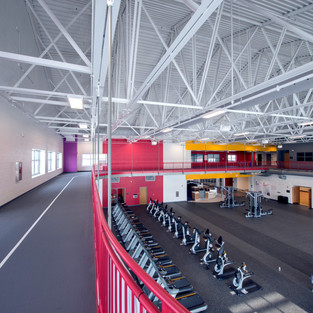Maximizing Value When Form Follows Budget
- moake park
- May 8, 2019
- 3 min read
Updated: Jun 26, 2019
How do YOU define Value?
• Lowest price?
• On or below budget?
• Scope that meets your needs?
• Long term cost of owning and operating expenses savings?
• Effective use of materials (low maintenance)?
• Visual impact of design (inspiring for users)?
• Innovative ideas?
• Effective design for HVAC, Electrical and Structural system?
• User (employee/customer) satisfaction and excitement?
• Improvements to productivity?
• Inspire others to great achievement?
This list could go on, but we hope some or all of these would rank high on your list, and you may have others to add.
A tight budget is NOT an excuse for poor design.
Every project can meet budget, yet not accomplish important objectives you may have. Every project has room to accomplish important goals without busting the budget.

The basic process leading to increased value to You is as follows:
1. Inception & Planning
• Defining everything you need and want to achieve in the project.
• Prioritizing everything you need and want to achieve.
• Developing realistic expectations regarding scope, budget and schedule.
2. Design & Engineering
• Consider bringing a Constructor or Construction Manager on board early.
• Throughout all design phases, concepts and ideas should be evaluated and compared the with developed list of owner expectations and objectives.
• Throughout all design phases we test material selections, building systems and components as to budget, and schedule life-cycle implications.
• All through the project we constantly revisit the budget and schedule to ensure delivery methodology, product availability, weather, labor and manpower resources in various building trades will not have adverse impacts on the project.
3. Constructing the Project
• At least 95% of the effort which affects budgets will have been completed by the time construction begins. A realistic, suitable budget is agreed upon for changes that may arise during construction.
• If changes need to be made during construction, we test all options before final determinations are made regarding potential expenditures.
• The “Team” continues to function and monitor the quality, progress and budget throughout the entire construction process.
4. Ownership and long-term costs of operations and maintenance
• When the project has been well planned, and the Team has fully executed the design and construction process, you will be positioned to achieve lower than expected costs for ownership and maintenance throughout the life of the structure.
Why? Because all of the items will have been vetted and designed into the project to ensure meeting your short term goals of getting the project completed on budget. You will benefit from the creative ideas of planning, design and construction to minimize your long term costs of ownership.
What are the options?
Should you simply meet a budget even if it means sacrificing your desired size (scope), not meeting your best functional needs, imagery, pride, productivity objectives, environmental or life-cycle cost savings?
OR
Should you develop a cost-effective, well planned and designed facility with just the right touch of appropriate imagery, invoking pride of ownership, higher levels of productivity and reducing the on-going expenses of ownership and of course while meeting the budget?
Talent, Experience and Creative problem solving are key attributes to effective design of all projects. Clients want high value, yet each has their own thoughts and specific ideas of what represents Value. Expending dollars and not meeting your key objectives is the most serious form of failure. It is our job and passion to understand your objectives and make sure your project achieves the highest value.
Maximizing your Value while meeting your budget is what we do and what we are known for.









Comments